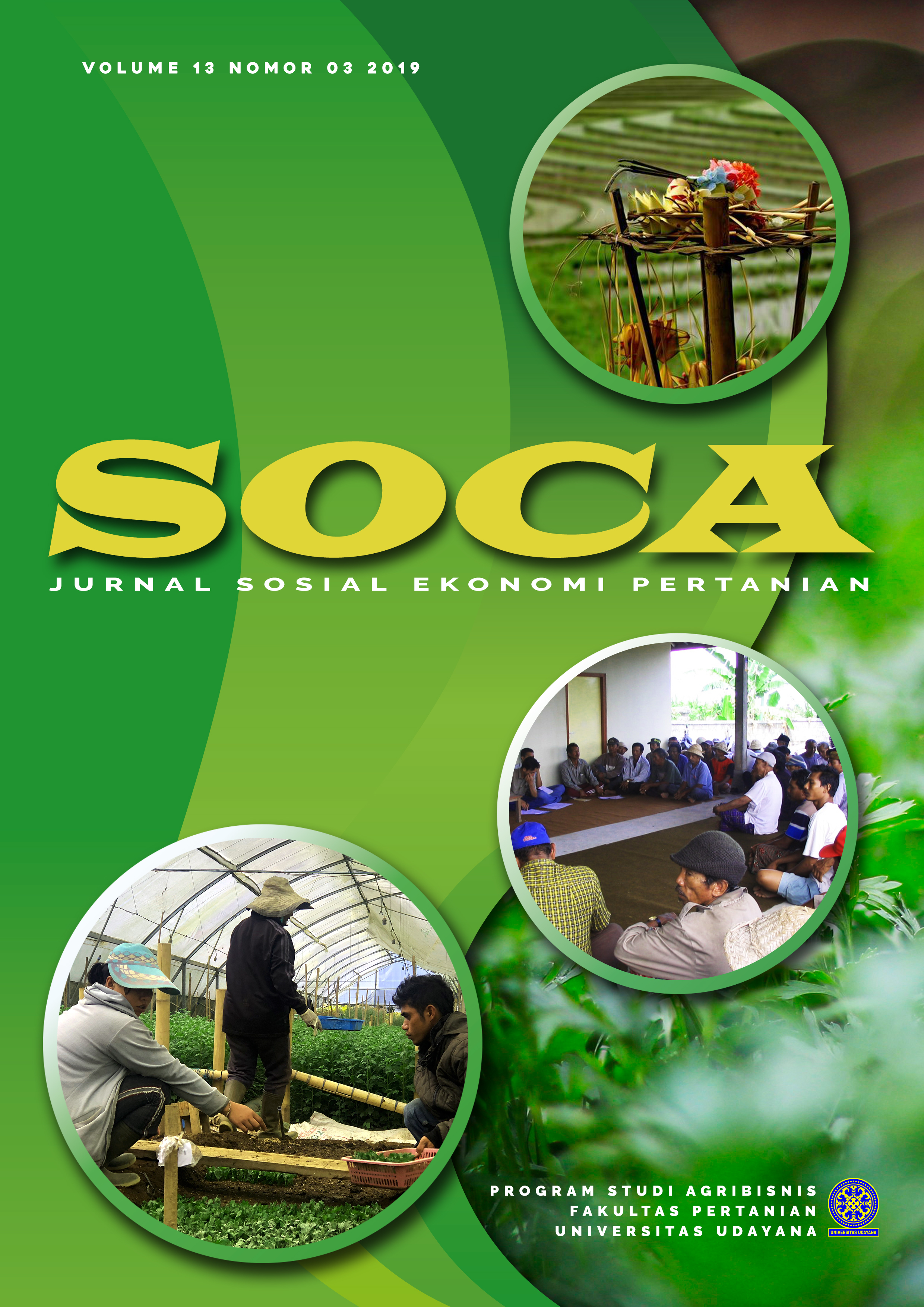PERAN BALAI PENGELOLAAN HUTAN MANGROVE WILAYAH I BALI DALAM PENGOLAHAN HASIL HUTAN MANGROVE BERBASIS PEMBERDAYAAN MASYARAKAT LOKAL
Abstract
Mangrove degradation is increasing along the proliferation of purposely land conversion. The utilization of the products of mangrove forests are oriented to the timber. Processing of mangrove products that have economic value should be a form of mangrove conservation and sustainability. Balai Pengelolaan Hutan Mangrove (BPHM) Wilayah 1 Bali, has become a center to processing mangrove forest products, especially non-timber products in Mangrove Tahura Ngurah Rai, which empowers local communities with skill training to process mangrove products into the economic value products. This research was carried out at the Mangrove Tahura Ngurah Rai. The method used is by observing mangroves by random sampling which will then be harvested based on the characteristics of ready harvest and harvest time. Mangroves that have been harvested, among others Sonneratia caseolaris, Bruguiera gymnorrizha, and Xylocharpus granatum. Those mangrove products will be processed into products such as syrup, soap, dodol, flour, rice, and scrubs. The processing of non-timber products is done through empowering local communities. The utilization of mangroves is more focused on the non-timber of forest products by utilizing mangrove fruits and leaves, ecotourism utilization, and silvofishery. BPHM I. Bali has an important role in maintaining the sustainability of the Mangrove Tahura Ngurah Rai.
Downloads
References
Ardi, A. 1996. Studi Produktivitas Serasah dan Laju Dekomposisi Serasah di Tambak Tumpangsari Pola Empang Parit dengan Berbagai Komposisi Jenis Mangrove. Skripsi Jurusan Manajemen Hutan. Fakultas Kehutanan. IPB. Bogor.
Departemen Kehutanan, 1992. Hutan Bakau Indonesia. Penerbit Dephut. Jakarta
Ewusie, J.Y. 1990. Ekologi dan Biologi Tropika. Yayasan Obor Indonesia. Jakarta.
Istomo. 1992. Tinjuauan Ekologi Mangrove dan Pemanfaatannya di Indonesia. Lab. Ekologi Hutan. IPB. Bogor.
Kitamura, S: C. Anwar, A. Chaniago, S. Baba. 2003. Buku Panduan Mangrovedi Indonesia (Bali dan Lombok). Project Pengembangan Mangrove Berkelanjutan. Departemen Kehutanan Republik Indonesia dan Japan International Corporation Agency.
Kusmana, C. 1993. A Study on Mangrove Forest Management Based on Ecological Data in East Sumatra Indonesia. Desertation at Faculty of Agriculture, Kyoto University, Japan.
Manurung, V.,T. Dan Sunarta, I.N. 2016. Konservasi Sumber Daya Taman Hutan Raya Ngurah Rai sebagai Destinasi Ekowisata. Jurnal Destinasi Pariwisata Vol. IV (2)
Soerianegara, I. 1964. Pengertian Produktivitas dalam Ekologi dan kemungkinannya dalam Penyelidikan Tumbuh-tumbuhan di Indonesia. Warta Penelitian Pertanian Volume 2. Lembaga Penelitian. Bogor.
Sugiarto dan W. Ekarianto. 1996. Ekosistem Lahan Basah di Indonesia. Asian Wetland dan PHPA. Bogor.
Sukardjo, S. 1985. Hutan Berair Melimpah di Indonesia. Oseana X (2) ; 62-77.













